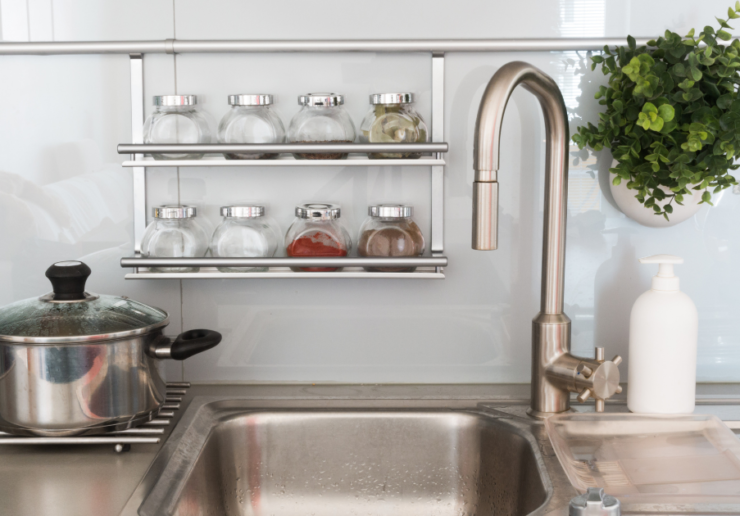
Stainless steel and aluminum are two of the most popular metals used for manufacturing. Widely used for their versatility and corrosion resistance, aluminum and stainless steel are staples in the metals industry. To know when it is better to use aluminum vs stainless steel, we must compare factors like their compositions, mechanical properties, and cost.
Stainless steel comes in a variety of grades. The grades are classified by a series number and assigned a numerical grade. The numbers classify the grades of steel based on their composition, physical properties, and applications. The most popular grades are 304 stainless steel and 316 stainless steel.
Due to its low tensile strength, aluminum is commonly alloyed with other metals to give it a number of different superior properties. Some of the most common aluminum alloys are 3003 aluminum and 3004 aluminum.
Both metals possess properties that are desirable for manufacturing a variety of products. However, the differences in their properties are a key factor when choosing which metal to use.
| Aluminum | Stainless Steel |
| -Good Malleability
-High Ductility -Good Conductivity -Light Weight |
-High Tensile Strength
-Heat Resistant -Very Durable -Low Maintenance |
Stainless steel is heavier and stronger than aluminum. In fact, aluminum is around 1/3 the weight of steel. Even though stainless steel is stronger, aluminum has a much better strength to weight ratio than stainless steel.
Steel is a poor conductor of electricity due to its dense protective oxide layer. On the other hand, aluminum is a very good electrical and thermal conductor.
Aluminum is a more costly than stainless steel if you look at price based on weight. But, if you look at price by volume, Aluminum is more cost effective because you get more product.
When comparing stainless steel vs aluminum, stainless steel has much better resistance to heat with a melting point of 2500 ℉, while aluminum becomes very soft around 400 ℉ with a melting point of 1220 ℉. However, aluminum has the advantage over steel in cold temperatures. As the temperature decreases, the tensile strength of aluminum increases, while steel becomes brittle in low temperatures.
Aluminum does not rust; however, it does corrode when exposed to salt. Stainless steel is highly corrosion resistant and does not easily rust. In addition, stainless steel is non-porous which gives it more resistance to corrosion.
| Alloy Grades | %C | %Mn | %P | %S | %Si | %Cr | %Ni | %Mo |
| SS304 | 0.040 | 1.580 | 0.024 | 0.040 | 0.400 | 18.35 | 8.040 | 0.070 |
| SS304L | 0.010 | 1.638 | 0.023 | 0.002 | 0.412 | 18.56 | 8.138 | 0.364 |
| SS316 | 0.080 | 2.000 | 0.045 | 0.030 | 1.000 | 16.80 | 11.20 | 2.500 |
| SS316L | 0.020 | 1.390 | 0.024 | 0.080 | 0.480 | 16.80 | 10.22 | 2.080 |
| Alloy | %Cu | %Mg | %Mn | %Si | %Zn |
| 2024 | 4.4 | 1.5 | 0.6 | 0 | 0 |
| 6061 | 0 | 1 | 0 | 0.6 | 0 |
| 7005 | 0 | 1.4 | 0 | 0 | 4.5 |
| 7075 | 1.6 | 2.5 | 0 | 0 | 5.6 |
| 356.0 | 0 | 0.3 | 0 | 7 | 0 |
Stainless steel is known for its good recyclability. According to Napa Recycling, steel is the most recycled material in the world. It has distinct magnetic properties that make it an easy material to recover from the waste stream for recycling. In addition, the properties of steel remain unchanged no matter how many times the steel is recycled.
Even though steel is the most recycled material, aluminum is the most recyclable of all materials. As a matter of fact, discarded aluminum is more valuable than any other material in your recycling bin. Nearly 75% of all aluminum produced in the U.S. is still in use today because aluminum can be recycled over and over again in a true closed loop. To learn more about recycling aluminum, visit the Aluminum Association.
Aluminum and steel are everywhere. If you look around at any given place, chances are you will see something containing one of these metals. Below are some common applications of stainless steel and aluminum.

When comparing stainless steel vs aluminum, you see they both possess characteristics that make them popular materials for manufacturing. Knowing the differences between them helps you to know when to use aluminum vs stainless steel. For example, aluminum is used for electrical applications because it is conductive and lightweight while stainless steel is not. On the other hand, stainless steel is utilized for things like engines and processing equipment because of its strength, resistance to heat, and corrosion.

Steel base plates are fundamental elements employed in various manufacturing...
Metal fabrication is a critical process that transforms raw metal...
The solar industry has undergone a significant transformation by incorporating...

X
The Kloeckner Metals website uses modern technologies. Unfortunately, your browser doesn't support those technologies.
Download the latest version of one of these browsers to experience the site: